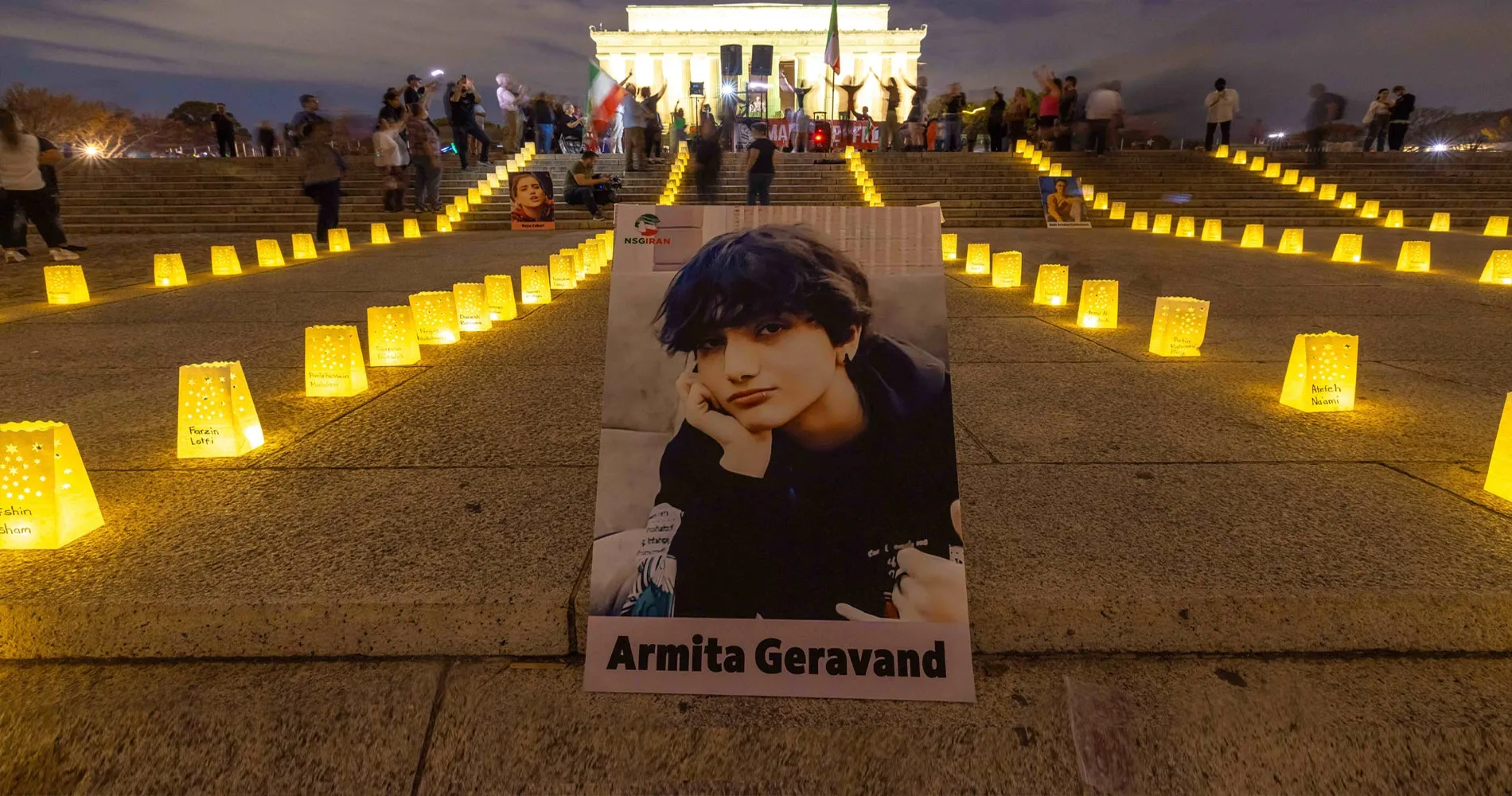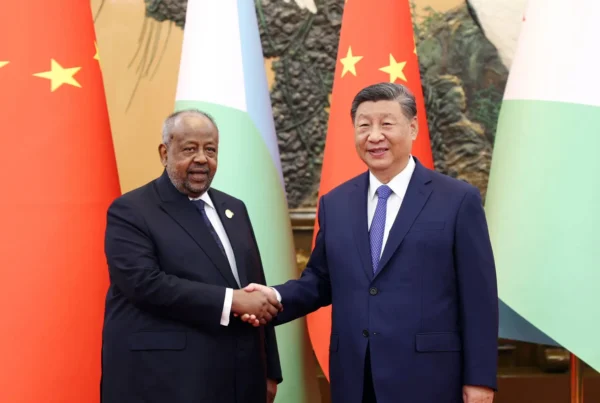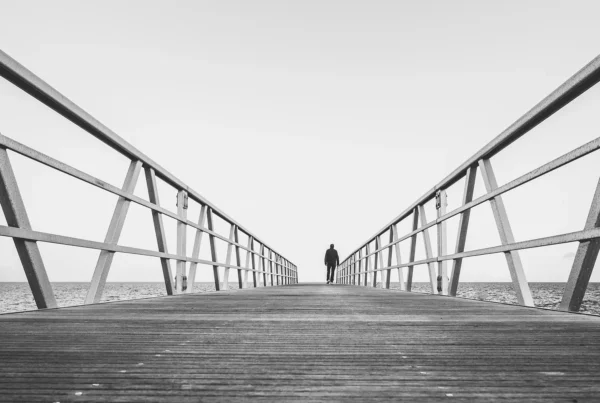Women have always been a major force in Iran. During the Shah’s time, the consciously worn headscarf was considered a visible sign of criticism of the Western-oriented regime. Following the revolution in 1979, the headscarf became an instrument of restraint and oppression. In recent times the fight of Iranian women for freedom has become closely linked to their opposition against the strict dress regulations imposed by the mullahs. Many brave women have lost their life fighting for equality. The most prominent of these being Masa Amini and Armita Geravand.
Mitra Shahmoradi, 9 December 2023
Arabic version | Spanish version
The women of ancient Persia, before the Islamic conquest, were employed on an equal footing with men in all offices, as prime minister, army commander, ministers, soldiers, etc. In 631 BCE, Azarmidokht became one of first women in history to serve as queen of Persia after her sister Boran. In a 10th-century now lost book Kitāb ṣuwar molūk Banī Sāsān (“The Sasanian picture book”) the historian Hamza al-Isfahani portrays her as “seated, wearing a red embroidered gown and sky-blue studded trousers, grasping a battle-axe in her right hand and leaning on a sword held in her left hand.” She built a castle at Asadabad and was given the title “the Just”. She was killed as an act of revenge by the son of Prince Farrukh Hormizd whose proposal she rejected.
Following the advent of the dominant new religion of Islam in Iran (670 CE), the social rules changed completely and women lost many rights. Nevertheless, the past remained in the collective memory of Persian society.
During the Ghadjar Dynasty (1794-1925), the strong influence of foreign states such as Russia and Great Britain, led to many problems such as poverty and loss of territory. During this period, freedom fighters, whose ranks included many women, fought against these grievances. In 1891, women – even those from the imperial court – took part in the fight against giving a tobacco monopoly to Britain. The popular struggle, now known as the Persian Tobacco Protest, was successful and the monopoly on the sale and export of tobacco was abolished.
In 1905 women, who were still veiled, played a major role in the Persian Constitutional Revolution for more democracy and parliamentarism. They took part in demonstrations, suffering injuries and death. This movement was “the first of its kind in the Islamic world, earlier than the revolution of the Young Turks in 1908” (Encyclopaedia Iranica, Vol. VI, Fasc. 2). After the victory of this progressive movement and the establishment of the Islamic Constitutive Assembly in 1906, the role of women was again forgotten and, unfortunately, they did not get the right to vote.
Out of this movement and the fight for democracy, Iranian women emerged with a new sense of entitlement and purpose. Women became active on their own behalf and formed women’s groups. They founded educational associations, political groups and published newspapers. Despite massive resistance from clerics and parts of the population, the first girls’ schools were founded at the beginning of the 20th century also owing to the great efforts by women. In addition, women continued to fight for the right to vote. A fight which they won in 1962.
Reza Shah, the founder of the Pahlavi dynasty (1926-1941) aimed to modernize Iran and introduced new laws in various areas. In 1936 he introduced a liberalization of the public dress code for women and men. Up to that point, women were forced to wear a full-body veil. Reza Shah legally abolished the veil requirement in 1936.
The headscarf before and after the revolution 1979
Before the revolution some female university students and female artists began to wear a headscarf and to forego form-fitting clothing. This phenomenon gradually spread through the population. This new dress code was a protest against the Shah’s rule. The headscarf became a symbol of equality for women, regardless of their social standing. It also was a statement that women did not want to be seen or treated as commodities. The female students with their headscarves were part of an overall movement against the perceived imported Western influence and a symbol of self-determination. It ushered in a new awareness of cultural identity.
During the pre-revolutionary period, the voluntary wearing of the headscarf by some young women was used a statement against various political and social ills: as a sign against sexism, oppression. It was a symbol of a women’s movement and a new identity. After the revolution in the early 1980s, wearing a headscarf became law in the Islamic Republic of Iran. This shocked many. Today, compulsory headscarves have become a visible feature of the regime’s identity. No longer can women decide by themselves to wear a headscarf – the headscarf is strictly enforced by Iran’s morality police.
The 2022-2023 Protests
The protests in Iran since 2022 have been an expression of people running out of patience. Many of their demands are not new. In fact, many of the demands coincide with those of the Iranian revolution of 1979, which was directed against the Shah’s pro-Western regime.
The courageous women who have taken on the pioneering task to fight for freedom and equality at these demonstrations are doing so at the risk of their own life. The protest movement has shown the world that Iranian women are active and educated and have in the last century again and again fought for their rights and against political and religious oppression.
The website of the NCRI Women’s Committee (https://women.ncr-iran.org/2022/11/25/the-list-of-women-and-girls-killed/) lists 93 women and girls by name who were killed during the 2022-2023 uprisings. The most prominent of these martyrs is Masa Amini, the young Kurdish woman who died in a hospital in Tehran on 16 September 2022 after being beaten while in the custody of the morality police.
The tragic death of Armita Geravand after she was attacked by a Hijab patrol in a Tehran metro station on 1 October 2023, which ultimately lead to her death, bears witness to the sad fact that the fight for women’s rights in Iran is long from over.
From Queen Azarmidokht to Masa Amini and Armita Geravand – Nothing has Really Changed.







